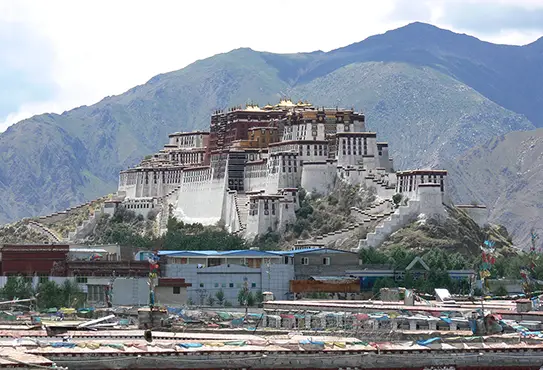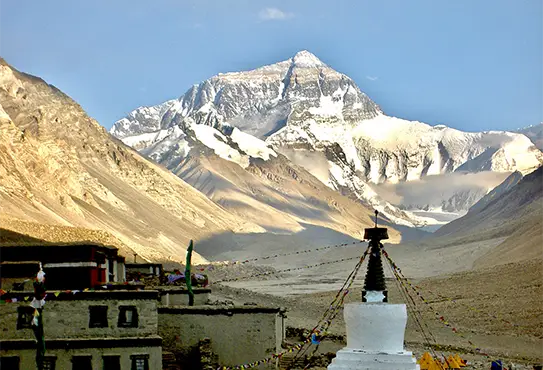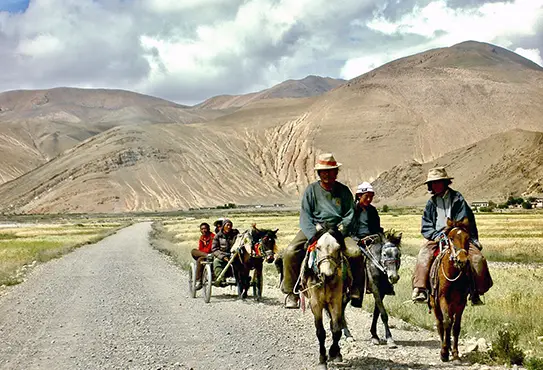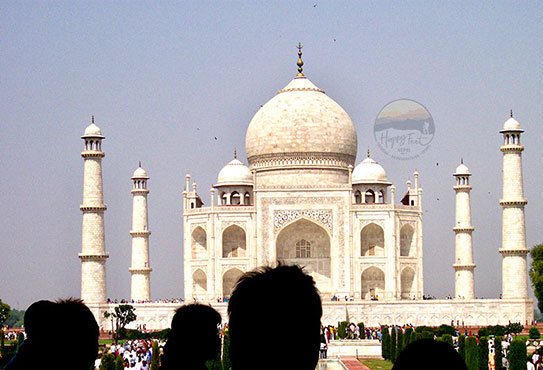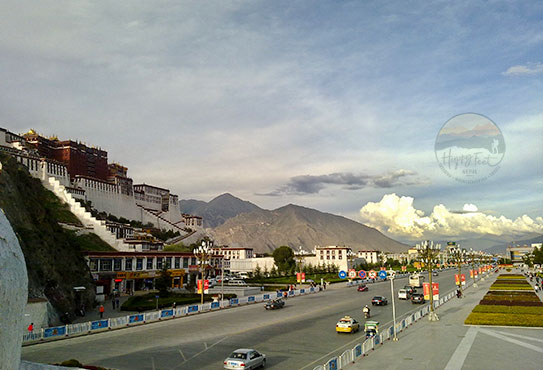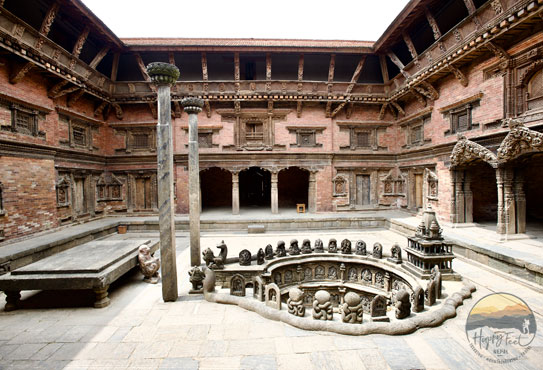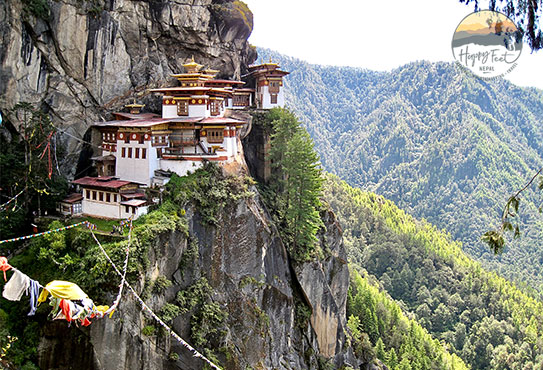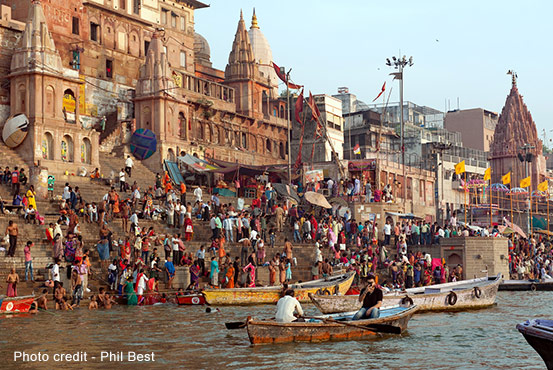-
Sunday - Friday: 9 AM - 4 PM
Nepal and Bhutan tour
The smile of the Himalayas, Monks and Monasteries
Special Offer for only 4350$ Per Person!
Our guest Phil Best expresses about Bhutan – “Bhutan is no ordinary place. It is the last great Himalayan kingdom, shrouded in mystery and magic, where a traditional Buddhist culture carefully embraces global developments.”
Tour of Nepal visiting Kathmandu and the monuments surrounding the Kathmandu Valley, listed in the World Heritage Sites by UNESCO. Visit Pokhara, in front of the Annapurna massif and the Chitwan National Park, one of Asia’s most important natural parks. Then we will fly to Bhutan, the only Buddhist Mahayana kingdom in the world, where we will admire its impressive landscape, monasteries, strong fortresses, and profound and almost uncontaminated culture.
Arrive in Kathmandu, customs and immigration formalities and claim your baggage, which takes some time. Upon exiting, the arrivals get a traditional welcome from the Happy Feet Nepal representative and transfer to the hotel. Reach the hotel and the rest of the day is free with the possibility of optional excursions (not included), but you can ask to organise any of the tours or stroll through its vibrant streets.
Kathmandu, the capital and heart of the country with three medieval cities, symbolises Nepal’s everything. Having lived through the several ruling dynasties of Buddhists and Hindus, the culture and society of Kathmandu Valley have evolved through time to give it more than a unique feature. Today it is an urban city, and still rapidly increasing, that has its ancient myths and, at the same time, is testimony to the greatness of people who have lived there for time immemorial.
Accommodation in Hotel Shanker, a 4-star hotel.
Breakfast at the hotel. In the morning, visit Swayambhunath, located on a lovely little hill in the northwest city centre, the most sacred site for Buddhists. The self-originated shrine is believed to have been built in its current form around 250 B.C. The stupa, painted with a pair of the Buddha’s all-seeing eyes, stands on a lotus mandala base on all four sides. The site offers a complete view of Kathmandu Valley, its surroundings, and the northeast Himalayas.
In continuity, drive to Patan, one of the three medieval cities of Kathmandu Valley and one of the World Heritage sites among the seven World Heritage sites of Kathmandu Valley, located 7-kilometres southwest of Kathmandu. The city known as Lalitpur, the City of Arts, was a renowned Buddhist centre in Asia and has four Ashoka-built Stupas and a multitude of miniature stupas, monasteries, viharas and temples. At Patan, we visit its Durbar Square, the Golden Temple, Thousand Buddha, and its museum, among other sites, which explain Buddhism and Hinduism in extensive labels within the living traditions and context.
In the evening, visit the Durbar Square of Kathmandu, an example of the urban architecture of the Malla dynasty with 19-storey buildings, temples and palaces, and the residence of the living goddess Kumari. Kathmandu Durbar Square, the old palace complex that exhibits a mass of temples and palaces, including the Gaddi Baithak Durbar, constructed in 1908, the Basantapur Durbar, or the old Royal Palace, and the Kumari Chowk or the residence of the Living Goddess. Basantapur is amongst the most attractive sites in the bustling centre of Kathmandu, and a Western traveller around two hundred years ago wrote that there were more temples than houses and idols than people in its city. Lying in the heart of Kathmandu, the Durbar Square is a World Heritage Site by UNESCO and not to miss sites. The individual building, palaces, and temples have intricately carved doors, lattice windows, and struts full of mythic and erotic figures.
We finalise with the tour and ride a rickshaw and roll through its old city market centre, the Ason Bazaar, seeing what the Nepalese people buy and sell in their daily run—accommodation in Hotel Shanker, a 4-star hotel (breakfast included).
Breakfast at the hotel. The Pasupathi is one of the holiest sites for Hindu Word and is also worshipped by Buddhists as one of their Dharma Protector, the presiding deity of Hindu Nepalese royalties. Pashupati is also the cremation ground in the ghats (cremation group) along the bank of River Bagmati, where the recently deceased Hindus of the Valley are cremated.
Then visit the Boudhanath, the great stupa of Nepal, one of the most important Buddhist sites in Nepal, with a diameter of over 200 meters.
Then we take a 13-kilometres drive to Bhaktapur, east of Kathmandu. Its original name is Bhadgaon, or the village of Devotees, and it is one of the living museums of Kathmandu Valley. Bhaktapur is filled with the 55-windowed Royal Palace, the Palace of the Kumari, the temple of Taleju, the temple of Pashupati, the main square of Taumadhi Tole, Nyatapola Temple (the most imposing the tallest such architecture in all of Nepal), the temple of Akash Bhairab (the second most important temple of Bhadgaon), the Dha Hateya and the Square of the Potters. UNESCO recognises Bhaktapur as a World Heritage Site.
After the visit, we leave by road toward Nagarkot, at an altitude of 2,099m and 32km east of Kathmandu or 19 kilometres northeast of Bhaktapur. Nagarkot is one of the most beautiful hill resort areas to enjoy seeing sunrises and views of the Mountain Range, from the Langtang to Everest. Accommodation at the Club Himalaya, a 4-star hotel, breakfast included.
Sunrise view tour. Breakfast at the hotel and departure by road to Pokhara, located 200 kilometres west of Kathmandu, is the third-largest city in the country. Due to its location, the temperature is always warmer than in Kathmandu. The driving takes you through an exciting country highway overlooking mountains and hills and scattered villages until we reach Pokhara—Annapurna, Machhapuchhre Himal, and Lamjung, which rim the northeastern horizons of the town.
Accommodation in Temple Tree, a 4-star deluxe hotel (breakfast included).
Breakfast at the hotel and transfer 13-kilometres to Pumdikot, a strategic hill with an ancient fort in ruins and recently converted into a Shiva temple; it is a beautiful viewpoint. The views of Annapurna, Pokhara and the peace stupa are beyond description. From Pumdikot, we take a scenic drive to Peace Stupa, enjoying magnificent views of Phewa Lake, the Himalayas, Pokhara City and its surroundings. The Peace Stupa site is equally beautiful, with splendid views.
The World Peace Stupa stands gloriously on a hill saddle above Phewa Lake and Pokhara City from where you get panoramic views of Phewa Lake, the city of Pokhara and Mount Annapurna and Lamjung (on a clear day). A Peace Stupa is a Buddhist monument to inspire peace in all races and creeds and to help unite them in their quest for world peace. Most of them were built since World War II under the direction of Nichidatsu Fujii (1885-1985), a Buddhist monk from Japan and founder of the Nipponzan-Myohoji Buddhist Order. In 1947, he started the construction of peace pagodas as world peace shrines, and in the year 2000, there were eighty Peace Pagodas built around the world between Europe, Asia and the United States.
Enjoy the landscapes of the site, visit the stupa, explore, go down to the lake shore, cross the lake by little boat, have a late lunch and visit the International Mountain Museum in Pokhara, where we will see and better understand the history of the mountain and mountaineering on the highest peaks in the world. We will understand the importance of the Himalayas of Nepal and the benefits that the Himalayas give to the millions of people and their natural habitat. After the visit, return to the shore of the lake for free time.
Accommodation in Temple Tree, a 4-star deluxe hotel (breakfast included).
Early in the dawn, sunrise view tour to Sarangkot viewpoint. Sarangkot, the most famous lookout in Pokhara, offers a grand panorama of the Annapurna ranges, Machhapuchare, Manaslu, Lamjung Himal, and Dhaulagiri range. From the Sarangkot lookout, you can also see the beautiful view of Pokhara Valley and its unique landscapes with Lake Phewa, Lake Begnas and Lake Rupa. A short 25-minute drive from the hotel in Pokhara lakeside puts you on Sarangkot, which offers a striking view of sunrise and a platform for Paragliding. Finalise the tour and drive back to the hotel for breakfast.
Then continue the drive to Chitwan National Park for a two-night and three-day safari program. Chitwan is the best national park in Asia, with an area of 967 km and 200km south of Kathmandu in the Terai floodplain formed by the Narayani and Rapti rivers system. This park is well known for wildlife preservation. Arrive at to resort and check in, and have lunch. In the afternoon, visit the Tharu Village and sunset view tour. At night Tharu Culture Show. Dinner and accommodation at the Barahi Jungle Lodge, a 4-star resort (full board).
Full day in the park with different activities included, such as a safari on the elephant back exploring the fauna and flora, highlighting the one-horned rhinoceros, deer, monkeys, wild boars, bison, bears, leopards and hopefully the Bengal tiger. In this area, there are 276 species of birds out of a total of 519, which makes it a true paradise for bird watchers. We will also do a canoe excursion on the Rapti River and visit the elephant area—lunch at the resort. In the afternoon, nature walks. Dinner and accommodation at the Barahi Jungle Lodge, a 4-star resort (full board).
Early morning nature walking—breakfast at the resort and departure by road to Kathmandu. Sightseeing driving takes you through the plains of Terai and ascends slowly to the hill and then into the valley of Kathmandu. Finally, arrive and transfer to the hotel. The rest of the day remains for leisure on your own.
Accommodation in Hotel Shanker, a 4-star hotel (breakfast included).
Accommodation at Namseling Boutique Hotel or Khang Residency, a 3-star resort (full board).
After early breakfast, take a charming drive north through the lovely countryside of Thimphu. Then hike to Cheri Monastery at Cheri Mountain, northern end of Thimphu Valley. The hike is climbing uphill for about one hour through a mixed forest of oak, rhododendrons and other shrubs with the sound of birds. This hike provides an insight into the Himalayan vegetation and rewards it with fabulous views. Then visit Zilukha Nunnery – the only nunnery in the capital. Enjoy the peaceful surroundings and interact with nuns about the monastic life. After lunch, visit Folk Heritage Museum and see the Takin (Bhutan’s National Animal). And stroll around the charming city of Thimphu in the evening.
Accommodation at Namseling Boutique Hotel, a 3-star resort (full board).
Make your way to Punakha, Bhutan’s old capital, enjoying Dochu La Pass’s views (3100m / 10,200ft). Take a short walk to the Chime Lhakhang, known as the Temple of the Divine Madman, a uniquely-adorned 15th-century temple said to bless visiting couples for fertility. After checking in at the hotel and lunch, drive to Mochu River. After crossing the bridge, you will be in the middle of the beautiful Punakha valleys, surrounded by misty mountains from all directions. The valley is home to rice and potato fields.
Next, hike to Khamsum Yulle Namgyal Chorten through the rice fields and pine forest. Khamsum Yulley hike is one of the popular hikes in Bhutan, including in the local community. It takes one and half hours of beautiful walk, starting from Kabisa village, a small village on the outskirts of Punakha Valley. The trail takes one through stunning green grasslands and streams and crosses the suspension bridge built over the Mo Chhu River. This short hike gives insights into the fantasticity of the county.
For the locals and in general, the final destination of this hike is Khamsum Yulley Namgyal Chorten, a Buddhist monastery built in 2004 on the order of Queen Mother, situated on the ledge of Punakha Valley. The calming golden spire and enchanting labyrinthine wall highlight the beauty and advancedness of Bhutan’s art and craft. Inside Khamsum Yulley Namgyal Chorten are huge statues of Vajrakilaya (a wrathful protective deity) who seem to be looking everywhere, ward off evil spirits, and offer protection to all living things in Bhutan. The way back is taken via the riverside trail through the villages and farmlands till Punakha.
Accommodation at Drubchhu Resort, a 3-star hotel (full board).
After a short drive to the hike start point, hike through farmlands, then gradually climb towards Dompala hills through forest. The hike is about 3 hours, mostly uphill. Situated on Dompala Hill, Limbukha is one of the picturesque villages in Punakha. The village is famous for growing red rice which has medicinal value. After exploring the village, return to Punakha by driving. In the afternoon, visit the impressive Punakha Dzong. Punakha Dzong is one of the most spectacular dzongs in the country. It serves as the winter residence for Je Khenpo, Chief Abbot of Bhutan.
Accommodation at the Drubchhu, a 3-star hotel (full board).
After breakfast, we set off on the road, climbing up the mountain road towards the east to reach the glacial valley of Gangtey or Phobjikha. When you arrive at the valley, your eyes get blessed with the valley’s scenic beauty comprising mountains, trees, animals, birds and shrubs.
This serene and remote beautiful valley with a milder climate, chosen as their winter home by the black-necked cranes that migrate from the plains of Tibet, is a must-visit place in Bhutan. After checking in at the hotel and lunch, visit the ancient Gangtey Monastery, overlooking the vast and beautiful Phobjikha Valley, standing gloriously on a hill ridge. Stroll around the surrounding villages in the afternoon.
Accommodation at Dewachen Resort, a 3-star hotel (full board).
After breakfast, drive through beautiful Gangtey Valley to the Zizi village. Then hike in the Jigme Singye Wangchuk National Park represents the best example of the mid-Himalayan ecosystems. The hike is pleasant, without steep climbs through a breathtaking virgin forest with beautiful flowers and scenic waterfalls. During the walk, you will have chances to see rare wildlife such as red pandas, Himalayan black bears etc.
Afternoon in leisure. You can enjoy the hot stone bath. In the evening, experience the home-cooked Bhutanese meal dinner at a local farmhouse (subject to change to another place).
Accommodation at Dewachen Resort, a 3-star hotel (full board).
After breakfast, set off on the road to Paro, which takes 4 to 5 hours of scenic drive. On the way, in Paro Valley, cross the bridge and reach Tamchog Lhakhang, a monastery built by Thangthong Gyalpo, who is known for having introduced the construction of suspension bridges in Bhutan and Tibet (many of the bridges are still in use today).
Rise early to hike to the magnificent Tiger’s Nest Monastery. The hike is about two miles and takes about 3 hours to reach the picturesque Tiger’s Nest (Taktsang) Monastery that clings to a cliff 3,000 feet above the valley floor. Tiger’s Nest is a sacred pilgrimage site where the great tantric, the mystic Guru Rinpoche (Padmasambhava or the founder of Tantric Buddhism in Tibet and Bhutan), is believed to have flown on the back of the tiger. This place is where he meditated and taught tantric Buddhism. After exploring the Tiger’s Nest, hike down, which takes about 2 hours. In the afternoon, visit Rinpung Dzong, a fortress monastery overlooking the Paro Valley with a long history. Built in 1644 by Ngawang Namgyal, the fortress monastery served as an effective defence against numerous invasion attempts by the Tibetans. Rest of the day in leisure.
Accommodation at the Village Lodge, a 3-star hotel (full board).
After breakfast, transfer to Paro airport for a regular flight to Kathmandu in tourist class with Druk Air (or similar airlines). Finally, arrive and transfer to the hotel. The rest of the day remains in leisure on your own.
Accommodation in Hotel Shanker, a 4-star hotel (breakfast included).
Breakfast and the rest of the day are leisure on your own. The Representative of Happy Feet Nepal will arrive at your hotel with transport three hours before your departure flight time. Get escorted from the hotel to the International Departure Terminal, see off formalities, and go through the immigration and departure.
Breakfast included.
